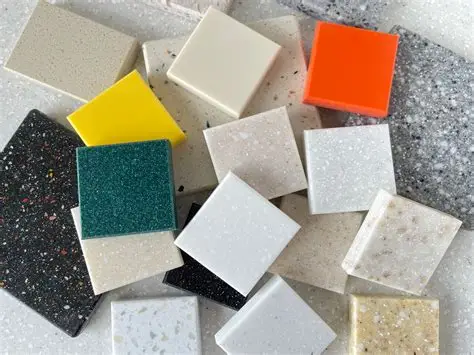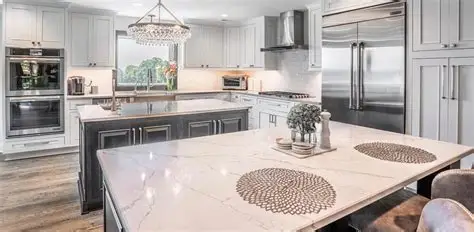Granite is one of the most well-known and widely used natural stones in both residential and commercial design. But what kind of rock is granite, exactly? In this article, we’ll take an in-depth look at granite’s geological classification, its formation, composition, and how it compares to other natural stones. Whether you’re exploring the science behind granite stone or considering it for your next kitchen remodel, understanding the rock behind the beauty is essential.

What Is Granite?
Granite is a coarse-grained igneous rock composed mainly of quartz, feldspar, and mica. Known for its durability and striking appearance, granite is commonly found in continental crusts where it forms from slowly cooled magma deep within the Earth.
Granite’s crystalline texture and mineral composition make it ideal for a range of applications, from polished kitchen countertops to rugged architectural stone.

Geological Composition and Formation
Granite Geology and Composition
Granite forms through the slow crystallization of magma beneath the Earth’s surface. Its primary minerals include:
- Quartz: Adds hardness and resistance to weathering.
- Feldspar: Provides color and structure.
- Mica: Adds shimmering flecks and texture.
This mineral makeup gives granite its distinctive speckled appearance and broad color spectrum, ranging from white and gray to black, pink, and even green.
Characteristics of Granite
- Hardness: Very high (6–7 on the Mohs scale).
- Porosity: Low, though some varieties may require sealing.
- Density: Dense and heavy, making it durable but difficult to work with.
- Resistance: Heat-resistant and scratch-resistant.
These characteristics of granite contribute to its popularity in homes and commercial spaces alike.
Types of Granite: Natural vs. Engineered
Natural Granite
Natural granite is extracted from quarries as large blocks and then cut into slabs. Each piece is unique, showcasing natural veining, patterns, and color variations.
Engineered Granite
Also called engineered stone, this is a mix of natural granite particles with resin and pigments. While it mimics natural stone, it’s more uniform and may not offer the same depth of appearance.
Common Applications of Granite
Residential Uses
- Granite Kitchen Countertops
- Granite Bathroom Vanities
- White Granite Countertops for a minimalist look
- Black Granite Countertops for contrast and elegance
- Granite Backsplash Designs paired with custom cabinetry
Commercial and Industrial Uses
- Floor tiles and wall cladding
- Building facades
- Landscaping and monuments
The Aardwolf granite countertop collection includes a range of premium options suitable for all applications.
Granite in the Home: Cost and Maintenance
Granite Countertop Cost
Costs vary depending on color, origin, and thickness. You can find:
- Affordable granite countertop options at wholesale suppliers
- Premium granite slabs through specialized showrooms
- Aardwolf granite pricing guide for budgeting your installation
Maintenance Tips
- Clean granite countertops daily with mild soap and water
- Sealing granite annually to preserve its finish
- Repairing chips in granite with epoxy or resin fillers
- Polishing granite surfaces to maintain shine
- Removing stains from granite using poultices or specialized cleaners
For deeper restoration:
How Does Granite Compare to Other Materials?
Granite vs. Quartz Countertops
- Granite: 100% natural, more variation, requires sealing
- Quartz: Engineered, uniform look, low maintenance
Granite vs. Marble: Pros and Cons
- Granite: Harder and more resistant to staining
- Marble: Softer and more porous, requires more care
Granite vs. Soapstone Durability
Granite is more resistant to scratches and heat, making it ideal for high-traffic kitchens.
Natural Stone Countertop Comparison
Compared to concrete, laminate, and tile, granite is:
- More heat and scratch-resistant
- A better long-term investment
- Aesthetic and timeless
Where Does Granite Come From?
Granite is sourced globally, with major quarries in:
- India
- Brazil
- China
- Italy
- United States
Wholesale granite suppliers often import slabs from these regions, offering a wide range of choices.
Buying Granite: What to Know
Where to Buy Granite Countertops
Look for:
- Local granite suppliers
- Custom granite installers
- Aardwolf granite installation services for premium support
Choosing the Right Granite
- Match granite backsplash designs with cabinets
- Explore the best Aardwolf granite colors for your home
- Consider granite better than concrete countertops in terms of ROI
Final Thoughts: Is Granite Right for You?
Granite remains a timeless choice due to its durability, natural beauty, and variety. Whether you choose white, black, or veined granite stone, you’re investing in a material that elevates both style and function.
Want a quick overview? Read the Summary About Granite? or explore what type of rock is granite?.
For safety during installation, don’t forget to check How to Use Ratchet Tie Down Straps to secure slabs.
Granite continues to define spaces with character, endurance, and value—making it one of the most desirable natural stones today.

